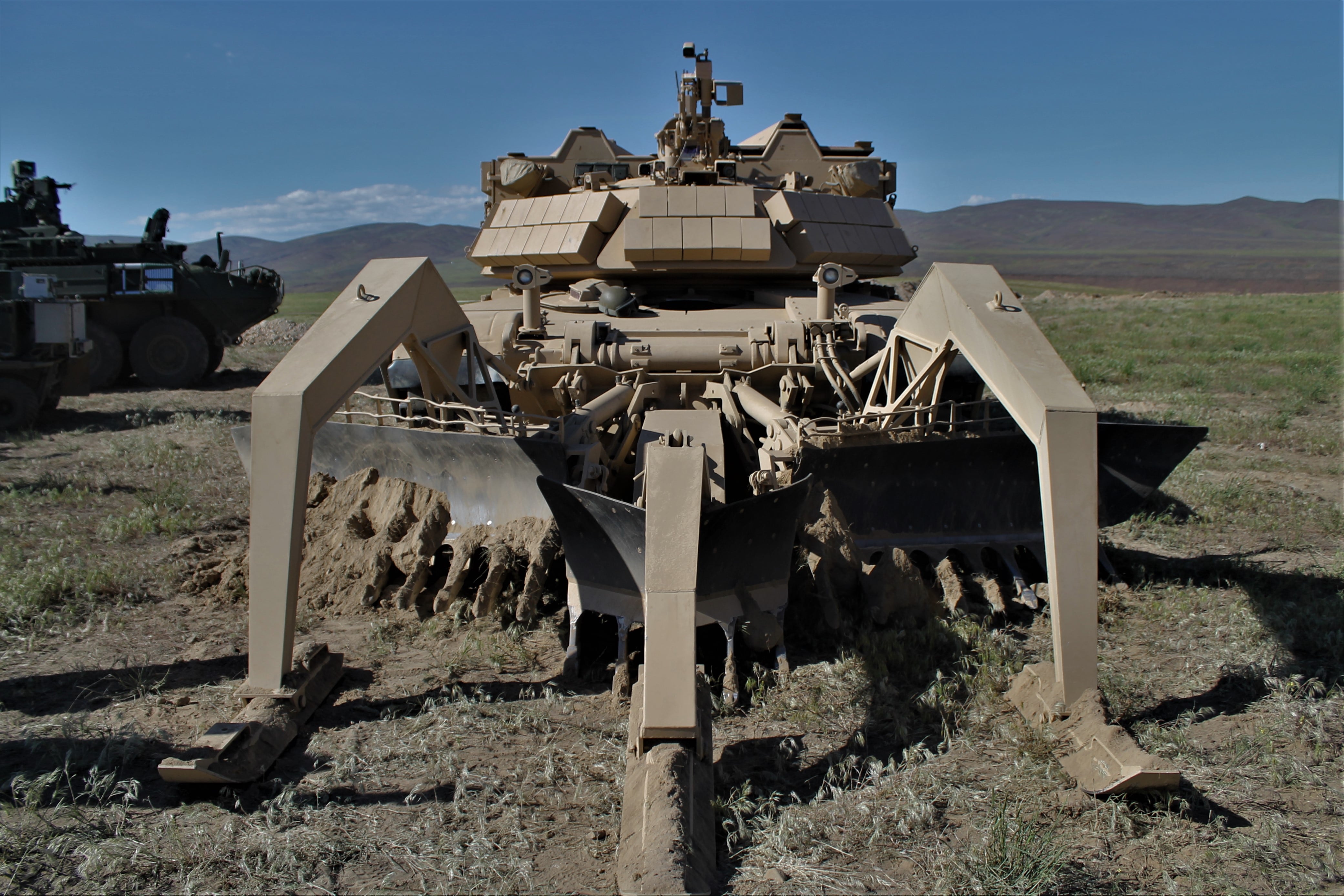WASHINGTON — The U.S. Army’s Joint Assault Bridge struggled in its first initial operational test and evaluation but saw drastic improvement in a second attempt in late 2020, opening up the program to begin conditional fielding to units, the bridging product manager within the Program Executive Office Combat Support and Combat Service Support, told Defense News.
The new JAB capability is intended to be a significant enhancement to the maneuverability of the Army’s combat forces, particularly armored brigade combat teams with M1 Abrams tanks and Bradley Infantry Fighting Vehicles. It is replacing the Wolverine and M48/M60 chassis-based Armored Vehicle-Launched Bridge systems.
The service needed the second test after its first one at Fort Bliss, Texas, in April 2019 revealed issues related to the hydraulic system and training. The second test was supposed to happen in June 2020 at Fort Riley, Kansas, but the coronavirus pandemic caused a schedule slip to an event that took place August through November.
Leonardo DRS made changes to the design of the hydraulic systems to address the line failures and also improved the manufacturing process, solving reliability issues and improving performance, Elizabeth Miller said in a statement.
The design changes were cut into the production line in January 2020, Miller said. Leading up to the second initial operational test and evaluation, the improved JAB was evaluated at two separate demonstrations, she added, giving the Army confidence it would see success in the second test and evaluation.
Prior to the second evaluation, additional live-fire testing was conducted at Yuma Proving Ground, Arizona, in the second quarter of fiscal 2020. The event confirmed design changes to the Automatic Fire Extinguishing System and armor integration mitigated vulnerabilities identified in previous tests.
Existing systems will be retrofitted with design changes prior to fielding, Miller said.
RELATED

During the second test, “all JAB systems completed both 96-hour mission cycles without an Operational Mission Failure,” Miller said. “During this time, the JAB completed 83 launch and retrieve cycles and 549 miles with all systems entering and completing the test event Fully Mission Capable.”
The JAB will be fielded under a conditional materiel release to its first unit — the 1st ABCT, 1st Infantry Division — in March 2021, Miller said. That was the unit that conducted the second test.
The conditional materiel release is in place to move forward with fielding while the program office makes improvements to the chassis and completes logistical requirements, according to Miller.
While the JAB is fully operational and meets mission requirements for large-scale combat operations, Miller said, the system continues to receive improvements to “reduce vulnerabilities ensuring the system can remain in the fight during a contingent environment.”
Leonardo DRS is under contract to complete the design, which will begin tests in the fourth quarter of FY21. The Army expects to receive a full materiel release in FY22.
The systems are slated to be fielded across the active, Reserve and National Guard components. The Army’s objective requirement is 297 systems, which will be delivered through FY27.
Congress zeroed out the program’s FY21 funding of $72 million in its appropriations bill, which eliminated the production of 15 JAB systems in the fiscal year. That cut delays the “ramp up” to full-rate production of four systems a month by more than a year due to the 14-month production lead time, Miller said.
However, the program is postured to increase production in FY27 by 15 systems to complete the Army acquisition objective, she added.
Jen Judson is an award-winning journalist covering land warfare for Defense News. She has also worked for Politico and Inside Defense. She holds a Master of Science degree in journalism from Boston University and a Bachelor of Arts degree from Kenyon College.





